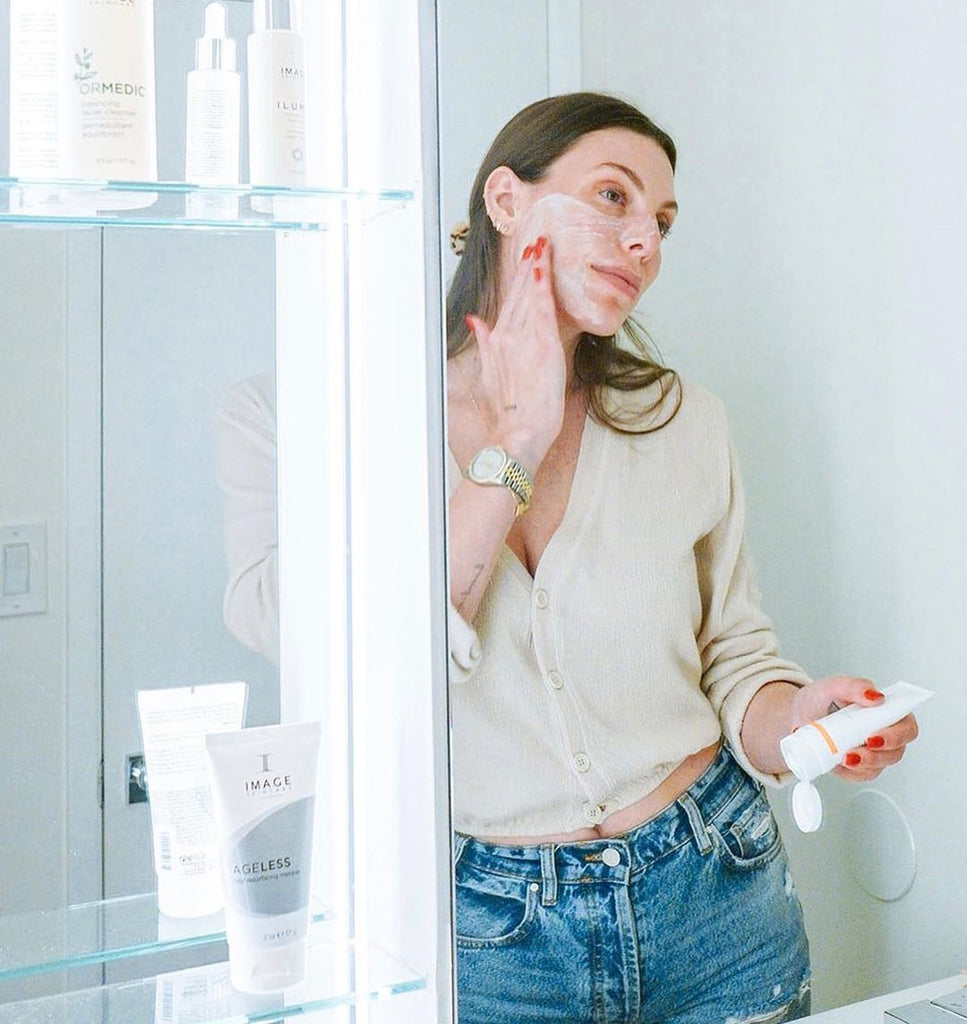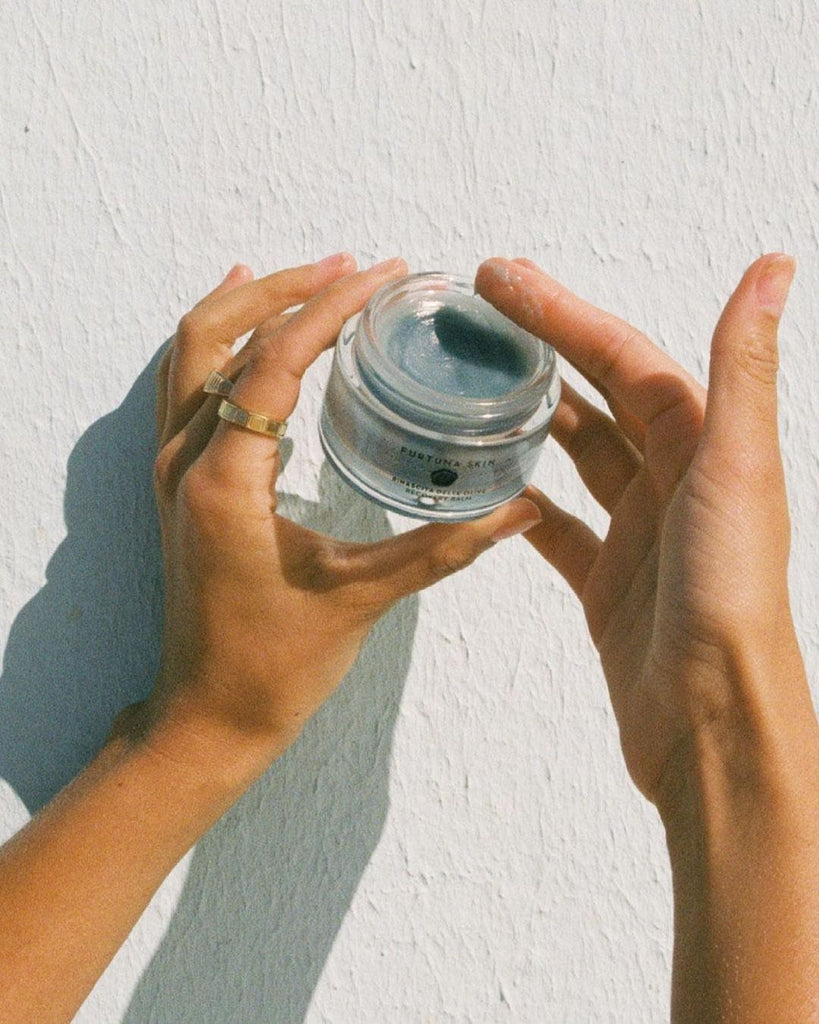To steam or not to steam? This was the question a friend posed over a recent Zoom® call. A steady diet of whatever-she-could-unearth-from-her-freezer had her pores feeling clogged, she’d lamented, and she wanted to know whether steaming her face could reset her skin to its pre-quarantine state.
Personally, I love a good at-home face steam; plus, it’s been part of any professional facial I’ve experienced (so it must be innately good, right?). Alas, the answer to whether you should steam your face — specifically, whether you should steam your face at home — cannot be boiled down to a simple yes or no answer. It depends on a multitude of factors, including your skin type, steaming frequency, and technique. Keep reading to learn the pros, cons, and surprising truths about face steaming, according to a dermatologist and an esthetician.
Skin Steaming Fact #1: It’s relaxing
With the world in turmoil, I’ve found myself looking forward to time with my face steamer for the same reason I look forward to bubble baths: There’s a zen quality to it all. “[Steaming] is a very relaxing treatment that can help decrease stress,” agrees NYC-based board-certified dermatologist Dennis Gross, MD. (He’s also the creator of the cult-classic Pro Facial SteamerTM, which happens to be my personal favorite face steamer.) Face steaming feels lovely — and, ostensibly, leaves your skin looking and feeling better, too. Win-win.
Skin Steaming Fact #2: Steaming requires cleaning
. . . and that includes your steamer, as well as your skin itself. Before you even think about steaming, “ensure the skin is completely free of makeup, oil, and debris,” says celebrity aesthetician Candace Marino. “Otherwise, you're just pushing dirt into your skin.” This is, of course, the absolute antithesis of why estheticians steam your skin in the first place!
It’s also crucial to clean and thoroughly dry your steamer between each use. “When water sits in the steamer overnight or long term, bacteria can grow, and the next time you steam you're literally spraying hot bacteria into your pores,” Marino warns. (Yikes!) To avoid this truly alarming fate, she advises cleaning the steamer with white vinegar after each use. Simply add a tablespoon or two of vinegar to the steamer reservoir, then add water to the reservoir as you normally would. Turn the steamer on and let it run until the smell of vinegar has dissipated, around five minutes. Marino also recommends using distilled water in the steamer reservoir in order to avoid corrosion or mineral buildup.
Skin Steaming Fact #3: It can clear pores and help prevent blemishes
Sebum, bacteria, and makeup (if you wear it) can create “solid, waxy buildup” deep inside the pores, Dr. Gross says. Left to its own devices, this buildup can lead to blemishes. One way to “purify” pores — and thus prevent blemishes before they form — is to steam your skin. According to Dr. Gross, steaming allows semi-solid gunk to loosen, liquify, and drain out of pores.
By the same “loosen and drain” principle, Dr. Gross also says that face steaming can make pores appear smaller post-steam. Here’s why: greyish and/or black buildup makes pores appear larger than they actually are. Releasing this “gunk” — whether it’s a full-blown blackhead or a sebaceous filament — makes the pore appear less prominent, and thus, smaller.
Personally, I can attest to this — particularly around my nose area, where sebaceous filaments make my pores look huge. Steaming allows those filaments to loosen — and thus allows me to gently remove them. Theoretically, dilated pores are much easier (and safer) to extract — hence, why facialists often steam your skin before they go to town with tools. (Sidenote: many at-home steamers come with extraction tools, like this highly-rated one on Amazon®.)
A quick sidenote on at-home extractions: be gentle, and practice proper extraction techniques. If a clogged pore still isn’t budging even after you’ve steamed, don’t force it. Too much aggressive pressure, and you could end up with a scab and/or scar that’s worse than the original blemish. (If you’ve already picked a problematic pore, here’s what to do next.)
Skin Steaming Fact #4: Steaming can help hydrate the skin — to a point
In addition to removing impurities, steaming your face can also add hydration, says Dr. Gross. Performed correctly, face steaming can increase your skin’s water content and leave it more hydrated. (Read about the difference between dry and dehydrated skin here.) “Steam is actually water which penetrates the deeper layers of skin to hydrate and plump,” Dr. Gross points out.
There’s one major caveat to this hydration principle, though: if you spend too much time with the steamer, you can actually subject your skin to increased dryness. “Generally, steam melts the natural oil on your face and helps remove it — however, you can also overdo it and strip skin by steaming too much,” Dr. Gross confirms.
Marino calls face steaming a “tightrope act” for this very reason. “There's a fine line between beneficial and counterproductive steaming,” she says. For the record, Marino says she has never instructed a client to perform DIY face steaming; given the current at-home circumstances, though, she understands why people are wanting to replicate a spa-like experience!
To steam without stripping, Marino recommends steaming in small spurts, somewhere between five to eight minutes. At the eight-minute mark, “you need to wrap things up,” she asserts. Otherwise, you could strip the skin and dry it out. Similarly, both Marino and Dr. Gross advise capping your steam treatments to two to three times per week. This frequency should be determined by how oily your skin is. (If you’re naturally dry, veer on the side of fewer steams; if you’re oily, your face can afford a few more.)
Skin Steaming Fact #5: Steaming can make your products work more efficiently
If you’ve ever felt like your skincare products absorb more efficiently after a particularly steamy shower, you might be onto something. According to Dr. Gross, one of the best things about face steaming is that it allows any subsequent products to absorb much more efficiently (thanks to clean, unblocked pores). Echoes Marino, “[Steaming] makes the skin more receptive to products applied post-steam.”
To ensure your skin is supple, bouncy, and plump post-steam, always follow with a hydrating serum and/or moisturizer. Specifically, Dr. Gross recommends using products containing hyaluronic acid (HA). His rationale: “HA traps and holds 1,000 times its weight in water, [so it] locks in the water content provided by the steaming.” Marino also deems HA an excellent ingredient to use post-steaming for the same reason. Her top pick is iS Clinical® Hydra-Cool® Serum ($94), which floods skin with hydration and calms redness with soothing botanicals.
Interestingly, clay masks, which are often touted for their pore-clearing prowess, are a major post-steaming no-no. “Acne prone skin types want to avoid using clay-based masks [in conjunction] with steam, as this combination will severely dehydrate the skin,” she says.
Beyond adding HA and avoiding clay, picking post-steaming products can be a bit of a choose-your-own adventure, depending on your skin type. For dry complexions, both pros recommend slapping on a moisturizing mask for a few minutes post-steam; this will allow newly purified pores to suck in as much hydration as possible. Try the Clarins® SOS HydraTM Refreshing Hydration Mask ($34), which contains hydrating HA and glycerin.
For oily and/or acne-prone skin, Marino recommends applying a mask that’s both hydrating and antibacterial. Her favorite: iS Clinical Hydra Cooling Intensive Masque, which contains aloe — a plant revered for its hydrating and antibacterial properties. Also spiked with hyaluronic acid and antiinflammatory rosemary leaf oil, this mask “provides the skin with much needed hydration, while calming inflammation, redness, and preventing/treating acne,” Marino explains.
Skin Steaming Fact #6: Steaming is not ideal for all skin types
If you have active acne breakouts, melasma, or rosacea, it’s best to avoid face steaming entirely — heat (in the form of steam, in this case) can exacerbate these conditions. “Heat is a big no-no for melasma, because heat creates inflammation in the skin, which will trigger the melanocytes to produce melanin,” Marino warns. “Heat is the enemy for melasma!” Instead, she recommends cold-based skin therapies, like cryofacials, which have soothing, calming effects on the skin.
Incidentally, one of the world’s most revered facials, Biologique Recherche®, is staunchly steam-free — opposed to steam, in fact — for all skin types. In their estimation, heat can cause more problems than solutions, including skin-aging inflammation. To play it safe, Marino suggests finishing any steaming treatment with something that decreases the temperature of the skin, regardless of your skin type. A cold washcloth, a chilled jade roller, or a simple splash of cold water will do.
This article was originally published on thespotlyte.com.



